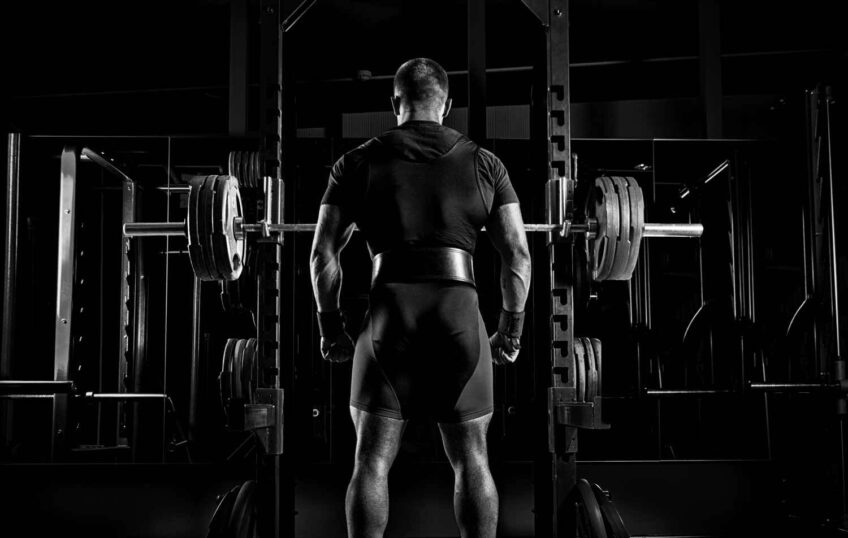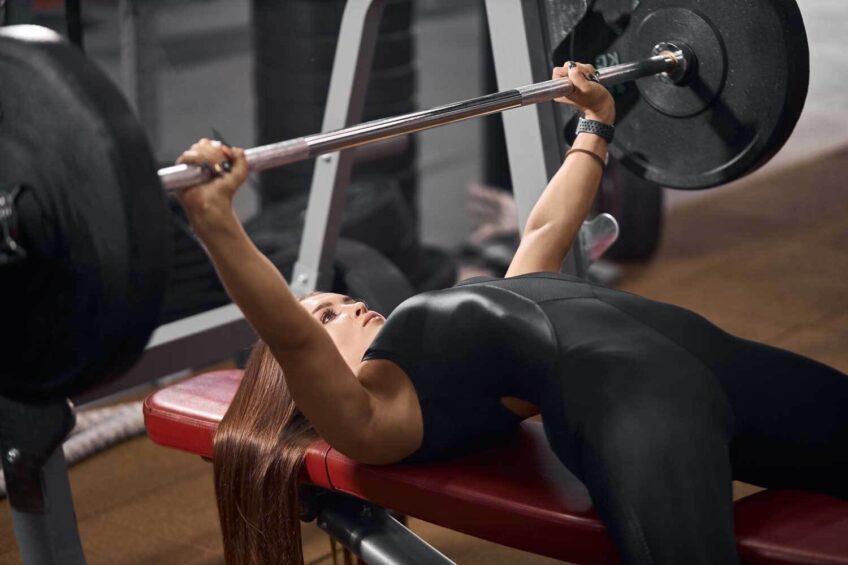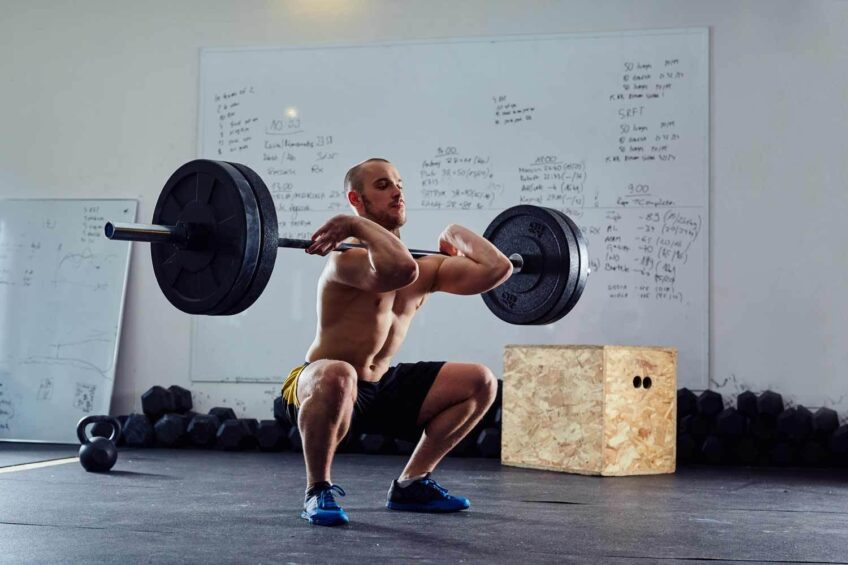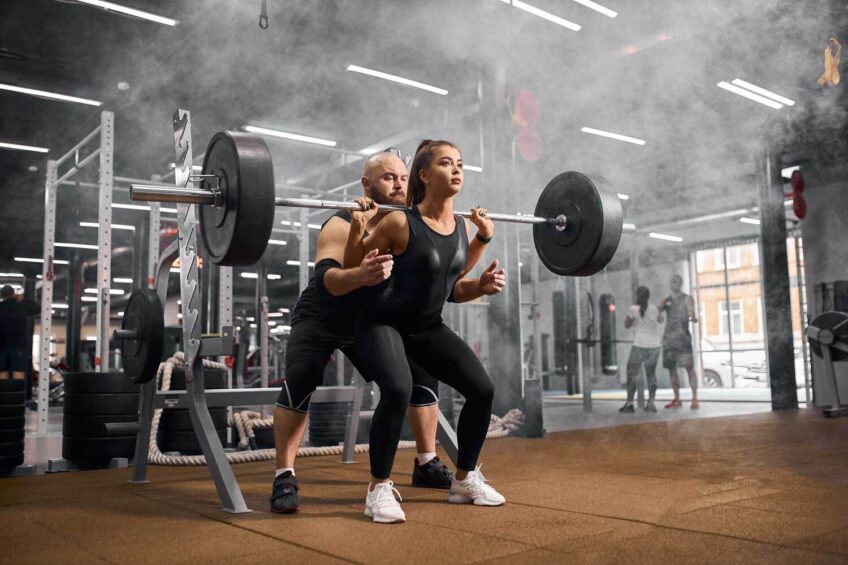Powerlifting vs. Weightlifting - What’s the difference?
To most people, both sports kind of blend into one. They lift heavy plates and barbells, right? Not exactly.

Two sports of strength, Powerlifting and Weightlifting, are extremely popular. Both are growing in popularity every day.
And, as someone who hits the gym regularly and pumps a lot of iron, I get to see and realize who in the gym is powerlifting and who is weightlifting.
Weightlifting is the sport you will see in the Olympics, while powerlifting is likelier to see on TV in events like the World’s Strongest Man. I have always loved watching both sports; they are the epitome of what you can achieve with sheer grit and willpower.
Both forms are extremely pure forms of sport.
In simplest terms, in either variation, one competitor walks up to the weights and tries to lift it, the weights increase, and the process repeats until there is only one competitor left who can lift the weight. They are the winner.
That quick description is the most basic way of explaining. However, I will provide additional details on the differences between the two sports.
Suppose you are considering starting down either path but are uncertain which one to pick. Hopefully, I will give you enough information to make an informed and somewhat educated decision.
The Difference at First Glance
If you were to watch both sports back to back, the main difference you would notice is the lifts that competitors compete in.
Weightlifters use a mix of clean and jerk and snatches. These movements are overhead movements. Meaning the bar is lifted above the competitor's head.
Powerlifters use the big 3 compound lifts: the squat, bench press, and deadlift.
While both exercises require strength, weightlifters focus on a mix of power, speed, and force. Powerlifters tend to focus purely on strength.
Speed Exercises are Performed
If you dive a little deeper, you will begin to see the fundamental differences between the two sports—first, the execution speed. Olympic weightlifting lifts are done quickly, while powerlifting lifts are a much slower grind.
You will find a lot more “misses” in weightlifting. This is because if the path is imperfect or the three joints used are not opened up correctly and in the right sequence, the lift is likely to fail. There is not enough time to correct a lift that has been positioned badly.
On the other hand, powerlifting is more of a competition of grit. The lifts are reasonably simple, requiring less execution and positioning. A badly positioned lift in powerlifting can usually be corrected quickly. The only time "lifts" fail in powerlifting is when a competitor runs out of steam while grinding to get the weight up.
Types of Muscles Used
Most people understand that weightlifting requires the use of fast-twitch muscle fibers during their lifts. This leads many to believe that powerlifting must use slow-twitch muscle fibers intuitively. Would it make sense, right?
Not necessarily. Powerlifters also primarily use fast-twitch muscle fibers.
The main difference lies in the actual muscles used. Powerlifters primarily focus on their compound muscles, often choosing one to specialize in.
Although powerlifters have to be strong in all three lifts to compete in certain events, they will usually be much better at one.
The world record holder for conventional deadlifts, Hafthor Bjornsson, is not the world record holder for bench press.
Benefits of Powerlifting
The high-force, slow-speed exercises powerlifters use are the most effective way of developing pure muscle strength.
Using the common exercise speeds like 2 seconds up and 3 seconds down allows for a much higher level of hypertrophy. The time spent under tension is one of the most important factors in muscle hypertrophy. The slower the rep speed, the higher the time under tension.

Weightlifting exercises, however, are an extremely explosive affair. This explosive high-speed approach isn’t very good at putting muscles into hypertrophy. For this reason, you won’t find many bodybuilders doing weightlifting exercises like the snatch in their program.
Weightlifters do spend their off-seasons training strength and hypertrophy for two reasons.
First, training this way increases muscle size and strength. This size and strength translate into power, which is extremely important for both types of lifters.
The other benefit is the increase in body weight. To lift more, you typically need more mass.
Benefits of Weightlifting
With an emphasis on high force, high-velocity exercises like cleans and squats, weightlifters use exercises that are believed to be the best approach for simultaneously training strength, power, and speed.

The exercises used to train for weightlifting, such as hang pulls, power snatches, and power jerks, develop explosive power. The goal of these exercises is always to move the bar as quickly as possible away from you. Trying to control and focus this bar speed results in a strong synchronization of motor functions and increases the development of your rate of force.
Weightlifting programs prioritize speed and power, whereas powerlifters focus on raw power. Weightlifters are naturally speedier and more athletic due to the combinations of high speed, high velocity, and high force movements that they perform.
Benefits of Mixing it Up
Increasing your 1RM (one rep max) has only a few valuable benefits. The lifting sports are perhaps the only time it is important. Speed, however, is valuable to the majority of high-velocity sports.
Training your power and strength is often thought to be a way to improve your speed and velocity. This is both true and false. Although a higher strength allows for explosive power development, strength training alone will not drastically improve your speed or velocity.
Force and velocity must be trained to maximize power and vice versa. Combining high-speed training with heavy resistant training will result in a greater gain.
Explosive high-force training, for example, will not increase your power input. Athletes who have already reached a certain level of strength will not benefit from quick sub-500ms lifts.
In reverse, squatting at 100% of your 1RM will improve your isometric strength massively but will not enhance the speed of the lift.
The answer points to a mix of both lifting styles being the most beneficial.
Need for a Coach
Although powerlifting will require a coach at a high level of competition, most lifts, training, and preparation can be done by anyone. This makes it a great choice for those who do not want to commit to needing a coach.
On the other hand, weightlifting is an extremely technical, difficult, and explosive sport with a high risk of injury. You will need a coach from early on to ensure that your form is perfect and that you follow a course that is not dangerous. This course should include hands-on practice with your coach.

Education is the key, and although you can learn a lot online, injuries from poor form can be life-changing due to a catastrophic injury.
Injury Risk in Weightlifting/Powerlifting
Unfortunately, there have been many studies that highlight the high risk of injury in both sports.
In particular, studies show that the risk is especially high in weightlifting. This is due to the complexity and difficulty of the exercises performed by weightlifters. Often, people are told that single-joint movements are more effective than weightlifting exercises for increasing performance. This might lead more people to powerlifting, which uses simpler exercises.
Let me be direct, though; weightlifting is as safe as any other training or sports exercise when performed correctly, with good form, and at the right weight. It's still imperative that you protect your joints while doing any lifting.
There is no hard stone evidence to show that weightlifting causes excessive injury. In fact, many people are shocked to learn that the injury rate in both lifting sports is lower than most sports like football, basketball, or soccer.
Differences Summarized
If you have read this far and are a bit confused by all the jargon or are still a little bit on the fence about whether these are the right sports for you, here are some summaries:
- Weightlifting produces much higher levels of power at all percentages of 1RM.
- Generating high levels of explosive speed and power is usually much more useful than generating huge levels of force in a single movement.
- Powerlifting uses exercises that demand high force and low-speed movement, which is best for those wanting to develop large muscles and strength.
- Slow training also puts muscles under longer tension, causing higher levels of hypertrophy.
- Weightlifting involves high-force exercises that are best for a mix of speed, power, and strength equally.
- They must be trained equally to maximize power, speed, and strength, meaning a mix of training from both sports is beneficial.
- Weightlifting beginners would benefit greatly from using a coach almost immediately and must be highly qualified and experienced.
- As long as you lift with the correct technique, both sports have a very low injury rate compared to other sports.
My Thoughts?
Anyone who has been to the gym and spoken to the massive powerlifting guys or the agile weightlifters will undoubtedly have been told different things. This has led to a rise in confusion among non-lifters, newbies, and all gym-goers alike. To the outside world, both sports kind of blend into one. They lift heavy plates and barbells, right?
Wrong. The exercises, training required, and nuances of the different sports differ massively in ways that deserve attention. These are athletes, and they deserve to be recognized for their individual sports.
What's the best approach for you? Well, only you will know that.
Tony Lee, MS, RD
Tony Lee, RD, MS, is a highly qualified and accomplished Registered Dietitian with a Master’s Degree in Nutrition Sciences. Tony brings over two decades of experience in dietetics, specializing in sports nutrition. Interests include studying all aspects of wellness, fitness, genetics, and peak health performance.














